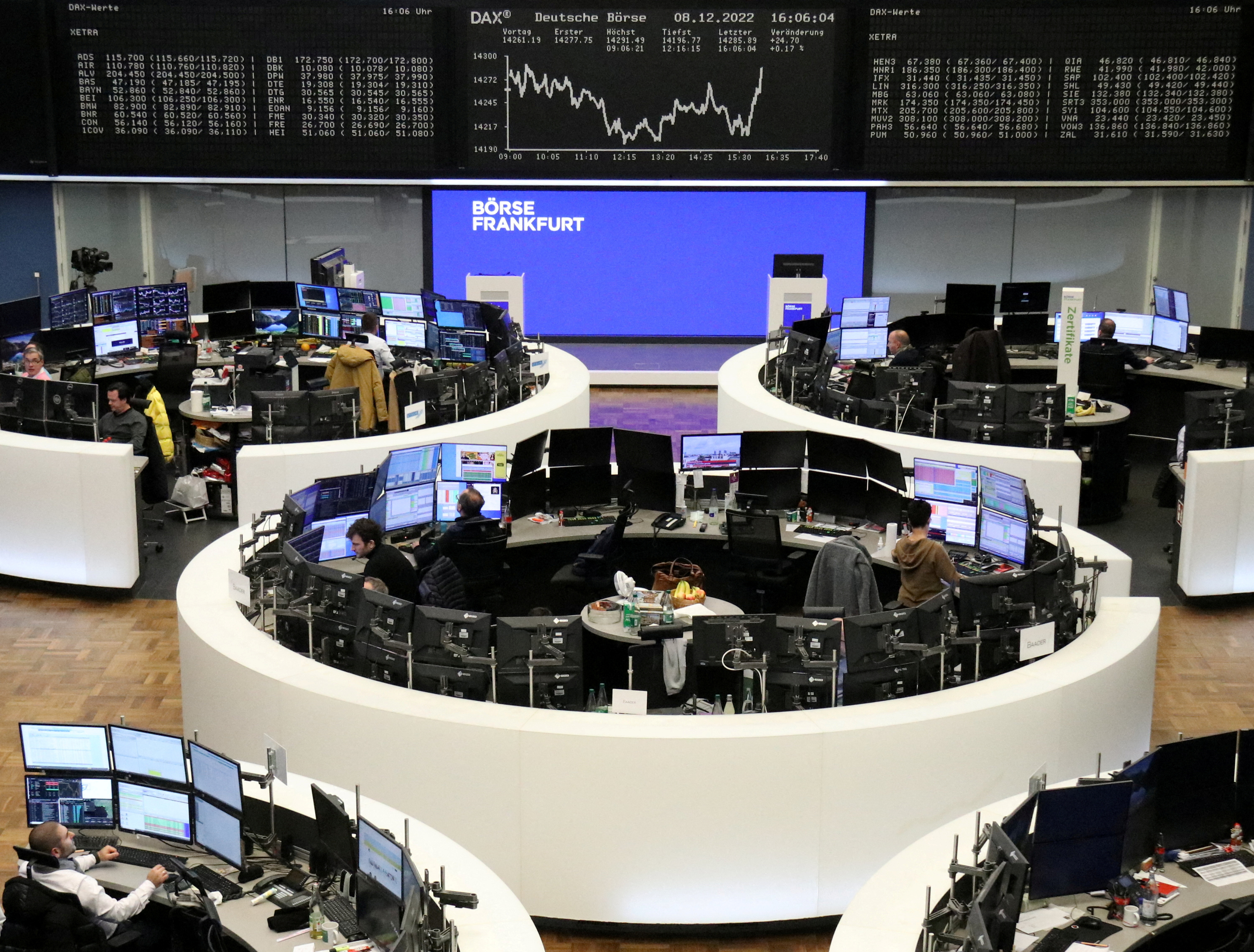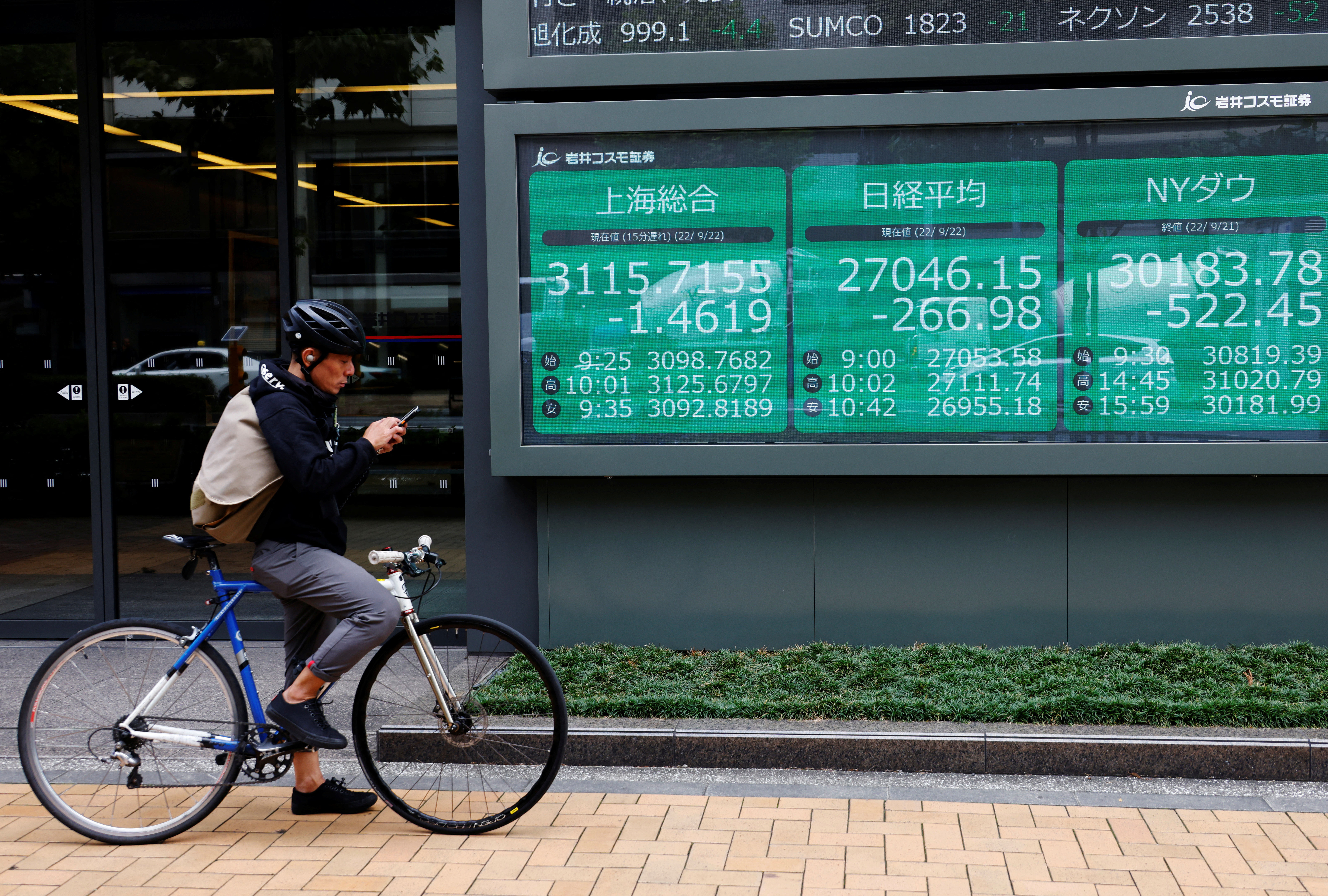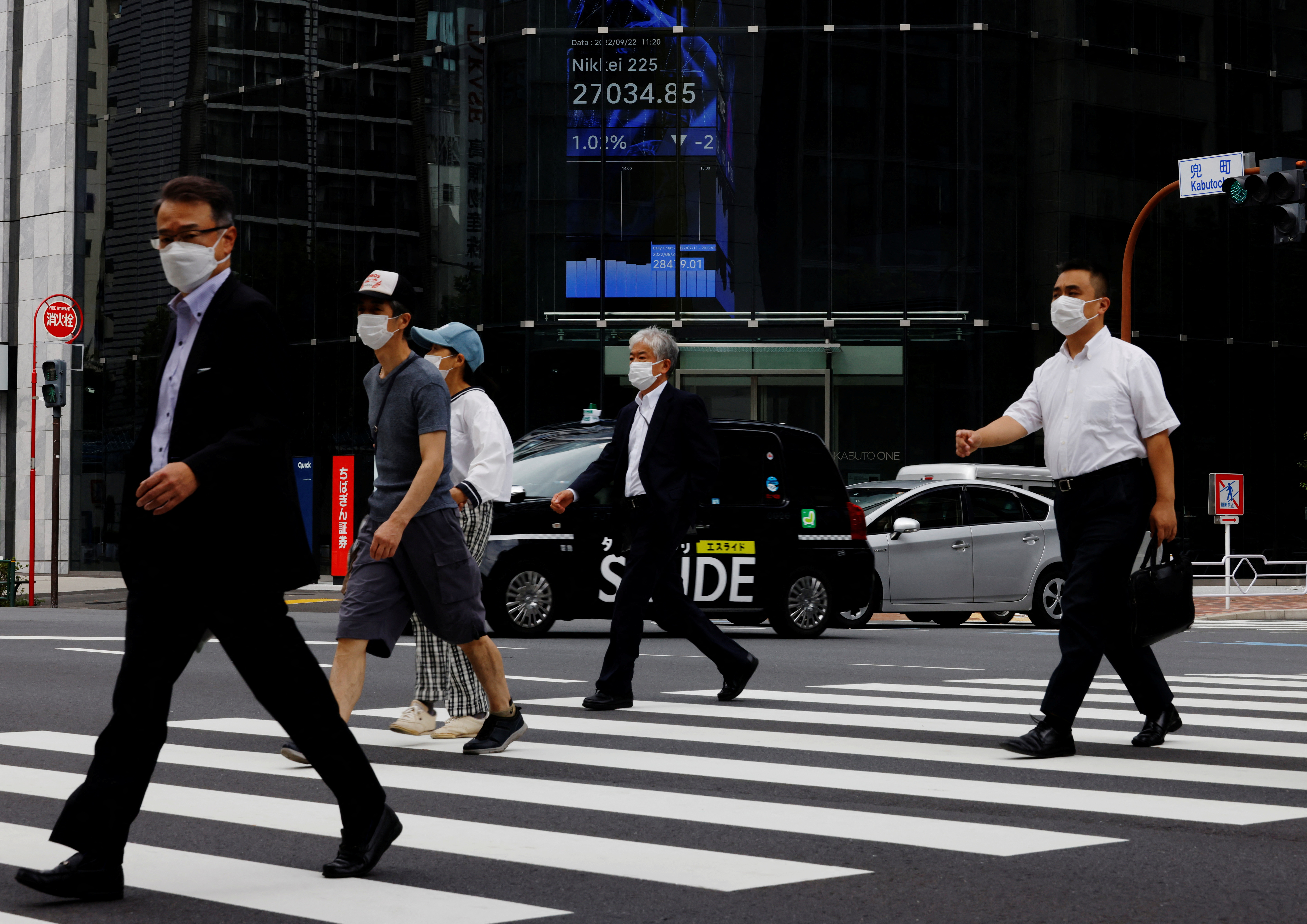World stocks were stuck near one-month lows and government bond markets came under fresh selling pressure on Friday, a day after a slew of central banks jacked up interest rates and signalled that the fight to tame inflation was not over yet.
Interest rates went up in the euro area, Britain, Switzerland, Denmark, Norway, Mexico and Taiwan on Thursday, following a U.S. rate hike a day before, and central bankers vowed to keep raising rates to bring down prices.
This week’s hawkish message from the likes of the European Central Bank and the Federal Reserve brought an abrupt end to optimism that peak interest rates are on the horizon.
Europe’s Stoxx 600 (.STOXX) share index fell 1.1% and futures trade tipped Wall Street’s benchmark S&P 500 index to open 1.4% lower later in the day. Major U.S. indices on Thursday suffered their biggest daily percentage drop in weeks.
World stocks were also under pressure after S&P Global’s flash purchasing managers index showed eurozone economic activity contracted for the sixth consecutive month in December, although the deceleration also eased to its slowest pace in four months.
In Asia, Japan’s Nikkei index closed at its lowest in more than a month (.N225) and MSCI’s broadest index of Asia-Pacific shares outside Japan (.MIAPJ0000PUS) was set for its worst week in two months.
All this left MSCI’s world stock index (.MIWD00000PUS) down 0.3% on Friday, and languishing near its lowest level in almost a month.
“Central banks delivered a blow to markets that were rebounding in anticipation of policymakers turning dovish on inflation and interest rates,” said Sunil Krishnan, head of multi-asset at Aviva Investors.
The ECB delivered a 50-bps hike like the Fed. Both opted for a smaller increase this time, but flagged there were more increases to come.
Its hawkish message triggered a second day of heavy selling across European bond markets where yields on benchmark German 10-year bonds jumped as much as 14 bps , .
The yield on Germany’s rate-sensitive two-year bond yield rose as high as 2.5% on Friday, , its highest level since 2008.
The closely-watched gap between Italian and German bond yields widened to 218 bps , while Germany’s yield curve pushed deeper into inverted territory in a sign that investors were positioning for a sharp growth slowdown.
British bond yields also jumped and U.S. Treasury yields edged higher in London trade .
“We now expect the ECB to go to 3.25% (including 50 bps in March) and the Fed to 5.25% which argues for persistent pressure on yields and spreads,” said Christoph Rieger, head of rates and credit research at Commerzbank.
In China, where markets are churning around an uncertain reopening, relief at the apparent resolution of a long-running accounting access dispute with the United States was not enough to bolster sentiment.
Meanwhile, Japan’s manufacturing activity shrank at the fastest pace in more than two years in December, while U.S. retail sales fell more than expected in November.
The prospect of further monetary tightening globally kept investors nervous about longer-run growth.
In currency markets, the dollar steadied after strong gains in the previous session.
The dollar index , which gauges the currency against six major peers, was roughly unchanged at 104.51. That followed a 0.85% surge overnight, its biggest since late September.
The euro was flat at $1.0626 , while the dollar was 0.5% weaker at 137 yen.
Gold ticked 0.4 % higher to $1,784 an ounce. Oil gave up recent gains with Brent crude futures down 2.2% at $79.41 a barrel.
Related Galleries:




